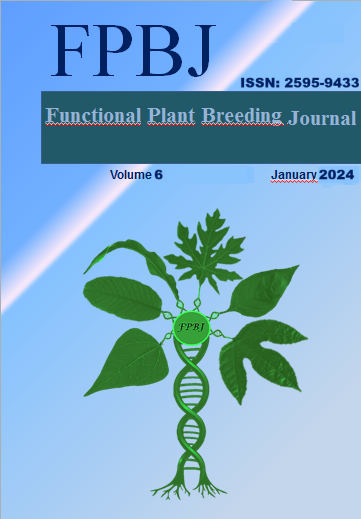Assessing the combining ability of grain sorghum hybrids using mixed models
Abstract
The main objective of breeding programs for grain sorghum is to increase yield while simultaneously reducing the growth cycle length and plant height. In this study, we sought to identify promising lines of grain sorghum with these traits. The experiment was carried out in 2012 in the experimental area of Embrapa Agrossilvopastoril,
in Sinop, Mato Grosso, Brazil. Using a partial diallel scheme, controlled crosses were performed between two groups of grain sorghum lines and we evaluated the following
vegetative and productive traits: days to flowering (FL), plant height (PH), and grain yield (GY). Restricted maximum likelihood and best linear unbiased prediction analyses
were performed to estimate variance components and predict genetic values, respectively. The general combining ability (GCA) and specific combining ability (SCA)
of combination were estimated, with likelihood ratio test values revealing significant effects of the GCA of both parents for the traits FL, PH and GY, and, the predictive
accuracy was greater than 0.90. The analyses have demonstrated that the hybrids H11, H22, H31, H32, H36, H51, H55, H56 and H71 have good combining capacity estimates.
Their average flowering periods ranged from 57.06 to 60.44 days, with plant heights varying between 1.56 and 1.61 meters. The average grain yield ranged from
2419.08 to 3105.44 kg ha-1. These traits hold significant importance within the context of sorghum breeding.














